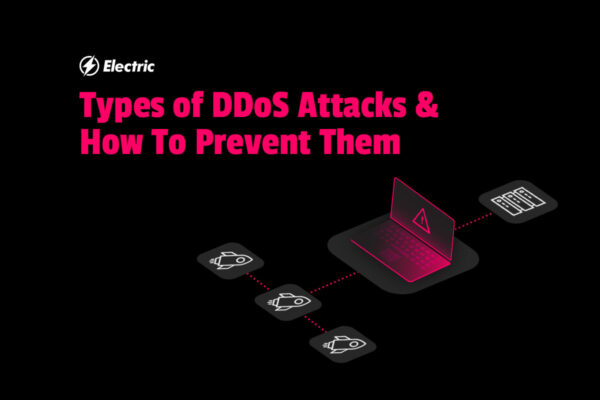
Most small to midsize businesses have an online presence in some form. While moving your operations online has its added advantage in today’s business environment, it’s also imperative to put measures in place to guard against hackers and online attacks. A Distributed Denial-of-Service (DDoS) attack is one of the challenges you may encounter when using online services. In that case, addressing this issue is critical because it will foster the continuity of your operations.
What Is A DDoS Attack?
A DDoS attack refers to an action focusing on compromising critical business systems. The intention behind DDoS attacks is the disruption of connectivity or network service, which results in a denial of service for victims. When you suffer a DDoS attack, you will experience the flooding of your servers or network with a wave of internet traffic. The traffic, in this case, is massive to the extent that it overwhelms your infrastructure.
Eventually, that may either take services offline, slow them down, or prevent legitimate users from accessing the services they need. A case in point is the Dyn incident that affects multiple services, including Paypal, Twitter, Reddit, and The New York Times, in one weekend. The DDoS attack leads to a loss of business, which suggests that you cannot afford to overlook the importance of protecting your firm from such an eventuality.
3 Types of DDoS Attacks
1. Protocol Attacks
The target in the case of protocol DDoS attacks is damaging connection tables in network areas that deal directly with verifying connections. As such, the attacking computer can cause memory buffers in the target to overload and even crash the system. That happens when the attacking computer sends successive partial packets, slow pings, and deliberately malformed pings.
Note that firewalls can also be the target of a protocol DDoS attack. When that is the case, a firewall alone cannot stop denial of service. The SYN flood is a common protocol attack, which uses the three-way handshake approach to establish a TCP/IP connection. Consequently, the target suffers a protocol attack on multiple fronts, thereby overwhelming their defenses. The solution here is the deployment of thorough and stronger countermeasures.
2. Volumetric Attacks
Internet Control Message Protocol (ICMP) and User Datagram Protocol (UDP) are the primary forms of volumetric DDoS attacks. This type of DDoS attacks target ICMP send false error requests to the target by attacking nodes. As a result, the target cannot respond to real requests since their focus remains on false ones. On the other hand, UDP promotes fast data transmission since data transfer happens without verifying its integrity.
That explains why UDP is an ideal tool for attackers. It is worth mentioning that common types of DDoS attacks overwhelm a machine’s network bandwidth by flooding every available open port on a device by sending massive data requests. That implies that such a machine will prioritize assessing malicious data requests and that there will be no provision to accept legitimate traffic.
3. Application-Layer Attacks
Direct web traffic is the focus of attacks that rely on the application layer, and the target venues, in this case, are SMTP, HTTP, DNS, or HTTPS. The topmost layer of the OSI network model and the one that interacts closely with system users is the application layer. So, identifying application-layer DDoS attacks is a challenge since they use a few machines or a single one sometimes. For that reason, a server can fall for the trick of imagining an attack is an increased volume of legitimate traffic.
Tips for Preventing All Types of DDoS Attacks
The evolution of DDoS attacks is not slowing down anytime soon, with “hybrid” or “blended” versions being the most common approaches presently. So, arresting a DDoS attack is impossible if you do not have traffic profiling and early threat detection systems. Adopting reliable DDoS mitigation and prevention solutions is not an option if you want to guard against such attacks. Here are some of the best practices you should consider adopting to prevent DDoS attacks.
Gain Insight into The Warning Signs
Intermittent website shutdowns, network slowdown, or spotty connectivity on your entity’s intranet are some of the symptoms of a DDoS attack. Although no network is perfect, you should take action immediately if performance issues become more severe than usual.
Establish A Denial of Service Response Plan
Conducting a thorough security assessment of your office systems should precede the development of a DDoS attack prevention plan. You will have no time to consider the best course of action when a DDoS attack hits, suggesting that you need to define that in advance. That makes the establishment of an incident response plan the first step towards instituting a comprehensive defense strategy.
The key elements of an ideal response plan include:
-
The list of the external and internal contacts you should alert when you suffer a DDoS attack.
-
A systems checklist of the assets you should implement for threat identification, assessment, filtering, as well as security enhancement.
-
Notification and escalation procedures.
-
A response team with distinct responsibilities.
Opt for DDoS-As-A-Service
If your firm’s network infrastructure is an environment that combines dedicated server hosting and cloud or in-house and third-party resources, investing in DDoS-as-a-service is advisable because it allows you to enjoy flexibility. Options like Siteground Woocommerce, for example, can host your server and optimize load times. Additionally, DDoS-as-a-service will ensure that all components of your security infrastructure meet the highest compliance requirements and security standards.
Emphasize on Basic Network Security
Probably, allowing as little user error as possible is the most basic countermeasure for DDoS attack prevention. Some of the basic practices that you should encourage employees to embrace are using secure firewalls to allow less outside traffic, creating strong passwords and changing them regularly, as well as leveraging anti-phishing strategies.
Real-Life Examples of Recent DDoS Attacks
Currently, DDoS attacks are the order of the day for both small and huge establishments. Over and above slowing such online services like websites and email, DDoS attacks can distract your cybersecurity operations even as other criminal activities like network infiltration or data theft are in progress.
Below are a few examples of recent DDoS attacks.
The DDoS Extortion Gang in 2020
In August 2020, a DDoS attack affects the New Zealand Stock Exchange (NZX) for several consecutive days. The attack’s origin is a DDoS extortion gang masquerading as the Amanda Collective and APT28 (Fancy Bear). The aftermath is targeting of other financial establishments by the DDoS attack and shutdown of operations, which brings trading to a halt.
AWS DDoS Attack in 2020
A gigantic Amazon Web Services (AWS) DDoS attack in February 2020 lasts three days and peaks at 2.3 terabytes per second. The target is an unidentified AWS client through a Connectionless Lightweight Directory Access Protocol (CLDAP) Reflection technique.
The approach relies on vulnerable third-party CLDAP servers and increases the amount of data going out to a victim’s IP address by 56 to 70 times.
The Year 2018 GitHub Attack
A DDoS attack that hits 1.35 terabits per second befalls GitHub, a platform for software developers. An analysis follows after that, which reveals that the traffic is from more than a thousand different autonomous systems (ASNs) across multiple unique endpoints.
Why Are DDoS Attacks Occurring More Frequently?
2020 will go down in history as a period that witnessed drastic change, witty inventions, as well as an increase in online activities and threats. Also, beyond maximizing the benefits of remote work, there is a rise in the frequency of DDoS attacks in the previous year for the following reasons.
-
An increased shift to remote working environments and over reliance on online services due to the pandemic. That, in turn, gives threat actors new opportunities to use DDoS attacks to extort and harass companies in 2020.
-
Over-dependence on remote connectivity escalates risk levels, thereby affording threat actors a chance to monetize different types of DDoS attacks.
-
A decline in the barriers to entry for DDoS attacks as a result of availability of for-hire services and tool-set improvements. As a result, the year 2020 sees attackers launching bigger and more consequential DDoS attacks.
Many types of DDoS attacks can still be successful even with all the ways to prevent them in place. As much as that is the case and as the threat landscape develops, security technologies are flexing muscles too. Also, insight into the warning signs of a DDoS attack is necessary because it will help you prepare for the unexpected in advance.
Figuring out all your bases to cover is not an easy process to navigate, especially in times like these— and that’s why Electric is here to support your organization.


